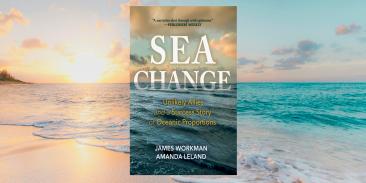Environmental Defense Applauds New Conservation Banking Guidance
(8 May 2003 — Washington, D.C.) The Interior Department today took an important step toward creating incentives for private landowners to conserve endangered species by releasing formal guidance governing the use of “conservation banks” to support endangered species conservation efforts. The guidance will ensure greater consistency in developing this rather new, but increasingly popular, conservation tool.
Conservation banks are properties dedicated to conservation of endangered species or their habitats in order to compensate for future losses of those same species or habitats. The owners of such properties receive “credits” for their conservation commitments, proportionate to the extent of those commitments. Those credits can then be used or sold to third parties to mitigate the impact of future development projects elsewhere.
“Conservation banking can turn endangered species into assets rather than liabilities, encouraging private investment for conservation,” said Robert Bonnie, an Environmental Defense economist who has helped establish conservation banks in the Southeast. “This guidance will make the process clearer, more consistent, and more attractive, to potential participants.”
Conservation banks have been used for endangered species conservation since the mid-1990s, primarily in California, where nearly 50 such banks are located today. In recent years, they have been used more widely outside of California. Among recent conservation bankers are: private ranchers in Texas and Arizona, whose ranchland provides habitat for rare cacti and songbirds; state highway departments in Colorado and North Carolina that foresaw that future road projects would require endangered species mitigation; a forest products company that is restoring endangered red-cockaded woodpeckers to some of its land; and a municipal sewer and water commission in Alabama that is managing habitat for the threatened gopher tortoise on buffer land around a drinking water reservoir.
Despite the growing number of conservation banks, Interior had no uniform guidance governing how such banks were to be established and operated until today. Now landowners interested in conservation banking can go forward with a clearer understanding of the rules, and the Interior Department can avoid inconsistency in its responses to banking proposals.
“Not only does the new guidance ensure greater consistency,” said Environmental Defense senior attorney Michael Bean, “but in several respects it imposes requirements that earlier banks have not always been made to meet.”
With more than 3 million members, Environmental Defense Fund creates transformational solutions to the most serious environmental problems. To do so, EDF links science, economics, law, and innovative private-sector partnerships to turn solutions into action. edf.org
Latest press releases
-
Canada-Alberta MOU a Disappointing Retreat on Oil & Gas Methane Regulation
November 27, 2025 -
Trump EPA Delays Methane Pollution Protections from Oil and Gas Industry Despite Health Risks, Energy Waste, Widespread Opposition
November 26, 2025 -
New York’s Climate Law Experiences Another Delay
November 25, 2025 -
Trump’s EPA Abandons Defense of National Soot Standard That Saves Lives
November 25, 2025 -
New Jersey Settlement: Protecting Residents and Their Environment
November 24, 2025 -
Report: Clean Energy Manufacturing Investments Dropped $3.4 Billion Last Month
November 20, 2025










